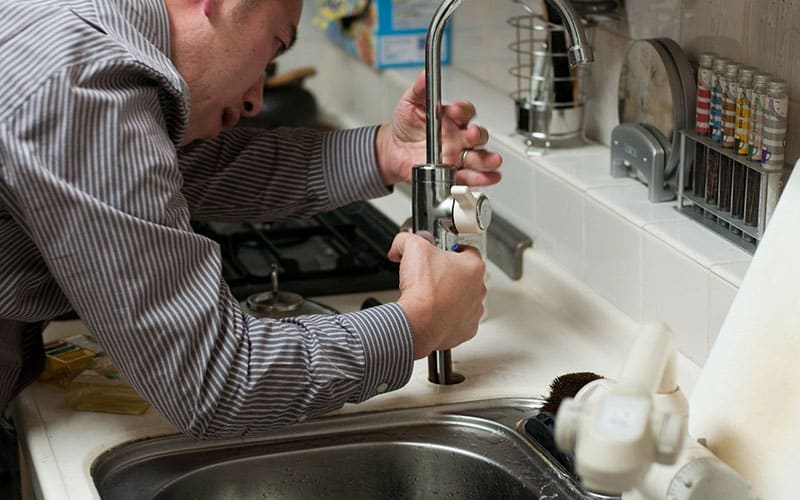As fall runs its course, Utah homeowners need to prep their houses for the colder, wetter months. Inside and out, our homes are built to protect us, but they can’t do much if we don’t put in the prep work.
High on the list of things to pay attention to is plumbing. On warm days, we don’t often think about it. It’s all good if it runs, right? Nope, because fall is a time when plumbing problems become common and start to affect our daily lives.
In this post, we will run through some of the most common fall plumbing problems and provide some tips and tricks to prevent and fix them.
Outside the House
When it comes to outside plumbing, you must consider two main issues: water flow and drainage. By this, we mean that you must ensure that any water coming from inside your house is blocked, and any water coming into your house can flow out freely.
Since the fall season is a time of cool weather and increased rain, the first step is to ensure that all your drains are clear. No one wants their roof leaking due to blocked drainpipes and pathways, making it difficult to access their residence. While the weather is still pleasant, get up on a ladder and check all guttering. Clear out leaves and other debris and make repairs if there are any cracks or leaks. Do the same for any ground drains you may have, and add in a few small drainage ditches alongside pathways to help guide runoff and stop flooding in your yard.
The other major threat to your plumbing is your outdoor pipes and faucets. Since these are direct lines into the internal plumbing of your house, you want to make sure they are properly shut off and insulated. Disconnect any hoses and turn off hose bibs, as they will not be necessary during the fall. This ensures that they will not pose risks to the integrity of your pipes.
With the cold weather closing in, these pipes and faucets run the risk of freezing. If they do, it can damage both the external pipeline and cause major leaks. Styrofoam insulation kits can be bought from most hardware stores and will easily protect your external pipework through the fall and winter months.
Inside the House
The main threats to the plumbing inside your home are drainage and heating. Like outdoor issues, you don’t want your home flooding during the colder months.
Your first step should be to check all the appliances and outlets inside your home. Ensure all sinks are free of leakage and replace any old, worn, or damaged pipework you find. The key areas to check are:
- Kitchen Sink
- Bathroom sink, bathtub, and showerhead
- Utility closet sinks
- Garage pipes
The newer these features are, the less likely they are to break or leak. Checking that all faucets are running freely, but also not leaking when turned off, is vital. Loose couplings can allow water to seep out and along pipes, and if this happens, there’s a chance it could freeze.
You should also make sure that sinks are draining properly. To do this naturally, pour a mixture of baking soda, salt, and white vinegar into the sink to help break down blockages before they cause problems. Check and replace the U-bends or traps you have, as this will also stop buildups of hair, limescale, or other waste from damaging the pipes in colder months.
As the ground temperature drops, all incoming water will cool with it, which means that your water heater will have to work harder. As the water getting in becomes colder, the hot water that is stored needs to be reheated more often. While it is normal to experience a degree or two drop in hot water temperature, you can prevent this by ensuring your water heater is running in perfect order.
Get your heater serviced as soon as the days start cooling to catch any issues. It can be pricey, but getting any potential problems fixed before they become more damaging is worth it. No one wants to lose their hot water during the cold months. Like with outdoor pipes, insulating any exposed pipes around your water heater will help prevent them from freezing.
In the Basement
If your home has a basement, this is an area that will need extra attention. During rainier months, basements become a flood risk. If your home is prone to basement flooding, then it may already have a sump pump installed. These are vital for ensuring that any trapped water is pumped back outside where it can drain away. Since the dual forces of cold weather and extra water will mean your pump has to work harder, have it serviced as soon as possible. And if you find signs of water damage in your basement, it might be worth contacting a professional company offering Davis County flood clean up and restoration.
As with your water heater, get all leaking or worn pipes replaced and insulated. Also, make sure that the circuitry and pumps inside it are in top condition. Even if the pipes are perfectly fine, a pump cannot drain water if the mechanisms inside won’t work.
The Wrap-up…
Preparing for a cool fall in Utah is a time-consuming task but worth it in the long run. Many disasters can be averted by a few hours of prevention before the temperatures plunge.

